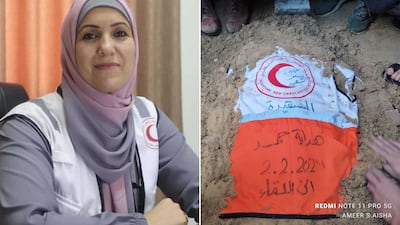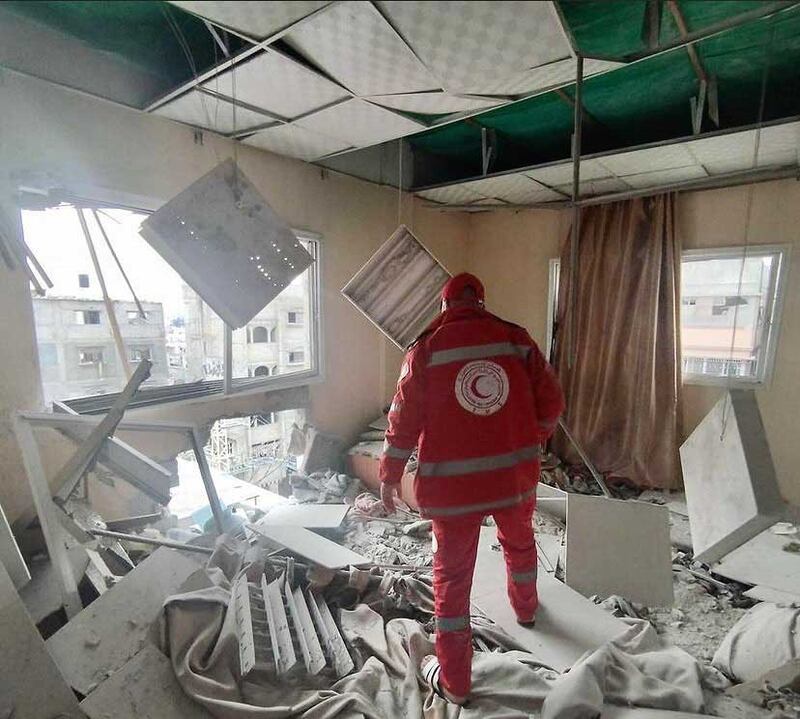Live updates: Follow the latest news on Israel-Gaza
A fire burns and the air is filled with dust inside Al Amal hospital after an Israeli strike. Wiring is exposed through holes in the walls of damaged rooms that are now empty of patients. Less space for treatment, less room for “amal”, the Arabic word for hope.
The Palestinian Red Crescent-run hospital in southern Gaza's city of Khan Younis was once considered a safe haven by more than 16,000 displaced people who called it home for months following the beginning of Israel's war on Gaza on October 7.
That changed as Israel intensified its operations in the south, until finally Israeli soldiers stormed the hospital's courtyard and then the facility itself on January 31, during a raid that continued for at least a week.
Most of its occupants – patients and their relatives, families with children and the elderly – were forced to leave.
Those who remain – about 170 people including a skeleton crew of 65 hospital staff – continue to face attacks, such as one on Tuesday whose aftermath was shared in video posted on Instagram by the Red Crescent.
Ranging in age from six days to 84 years, the patients, volunteers and medical staff, along with their families, survive on bread made in the hospital and canned foods.
“We were prepared for days like these,” Osama Kahlout, who ran the hospital's control room, told The National.
He is now in Rafah after continuing to work at the hospital through 112 days of the war, but keeps in touch with the staff there by radio.
Mr Kahlout said the Israeli raid on the hospital was “indescribably humiliating” for the people there.
The Red Crescent published photos that it said showed wounds from torture that its staff suffered at the hands of Israeli forces.
The Israeli army did not immediately respond to The National's request for a comment.
Trying to leave the hospital could be fatal because of Israeli snipers stationed outside, Mr Kahlout said.
“You can't even step one metre outside without getting shot.”
He cited the example of Hedaya Hamad, director of the hospital's Youth and Volunteers Department, who was killed on February 2 while trying to rescue displaced people after they had come under Israeli fire.
“While attempting to move from building to building, she was shot in the neck and chest,” Mr Kahlout said.

Ms Hamad is among at least 30 people who were buried in the hospital grounds because the morgue was full, Mr Kahlout said.
Despite the siege and Israeli troops using armed quadcopters to fire into the hospital, as well the dwindling supples of food and water, Mr Kahlout said his team remain in good spirits.
“With [phone] communications down for 38 days, we mainly communicate via VHF, when the signal is good enough.”
He said he speaks to the team every day, sometimes several times a day, but their conversations are monitored.
“Israeli forces stationed outside the hospital sometimes interject with derogatory remarks or insults.”
Part of his job is to try to keep up the spirits of the men and women running what remains of the once-bustling hospital.
“We sometimes make jokes. I try to cheer them up and reminisce about the funny moments we lived through together.”
More importantly, Mr Kahlout said, they are continuing to provide care for their patients.
“We find ways. We manage.”







